
This design kit contains 21 fonts, revived from extinct originals created between 1900 and 1912, mostly by the Schelter & Giesecke foundry in Leipzig, Germany. All were meticulously researched, redrawn, and expanded for modern use. They support most European languages. Their smooth curves remain perfect at any size. The fonts come in OpenType format for desktop and web use, and most contain extensive OpenType features for alternates and special characters.
Complete your layouts in style with the included border and symbol fonts.
Click the images below for a larger view, and the links below each to see full character sets, and try the fonts out for yourself!
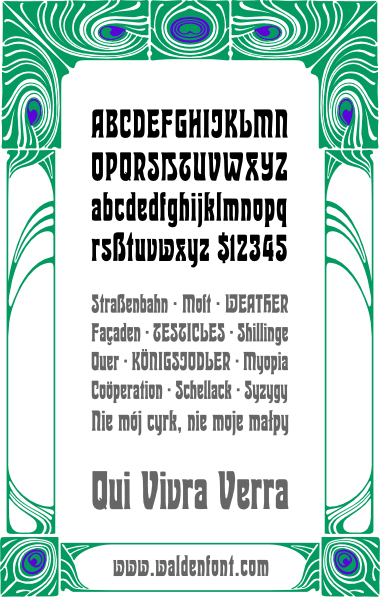 WF Dahlia
WF Dahlia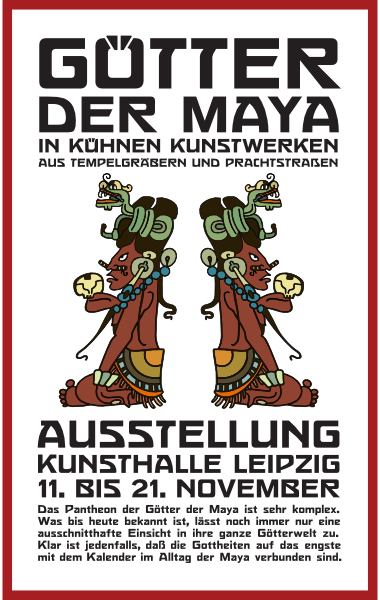 WF Fafner
WF Fafner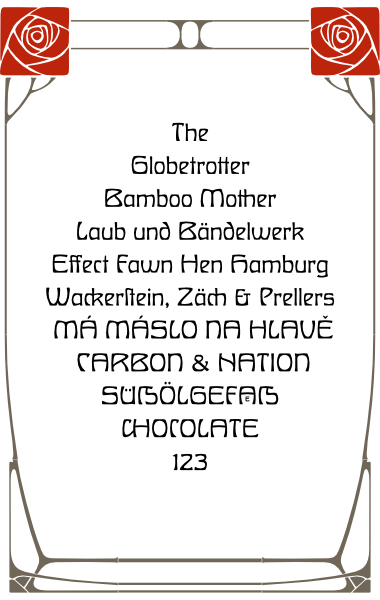 WF Habsburg
WF Habsburg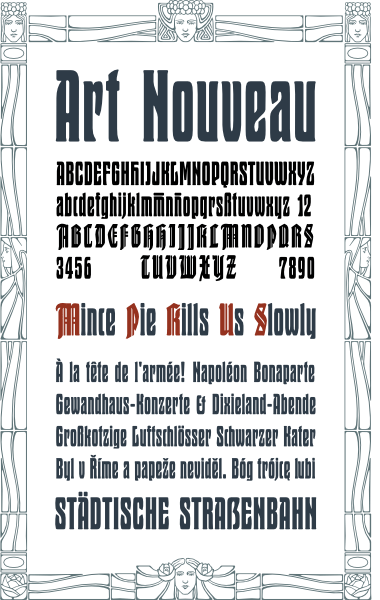 WF Liane Semi-Bold
WF Liane Semi-Bold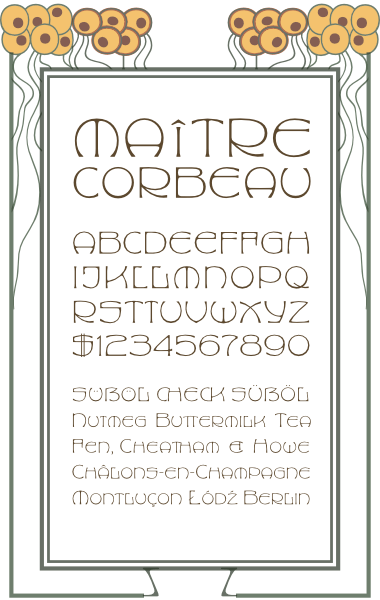 WF Maria Theresia
WF Maria Theresia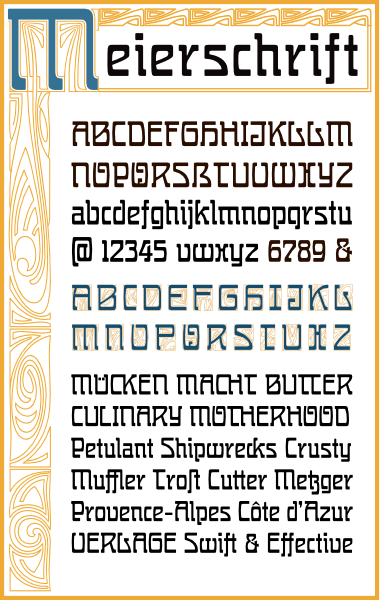 WF Meierschrift
WF Meierschrift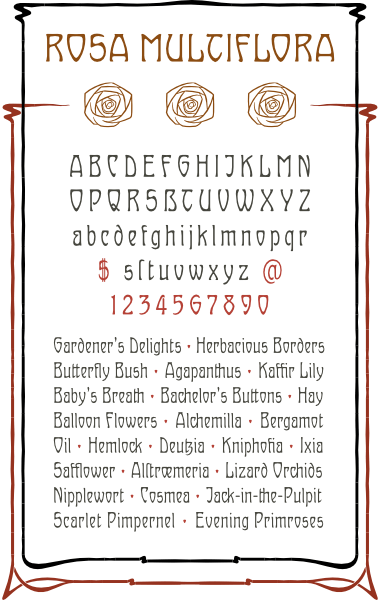 WF Ovid
WF Ovid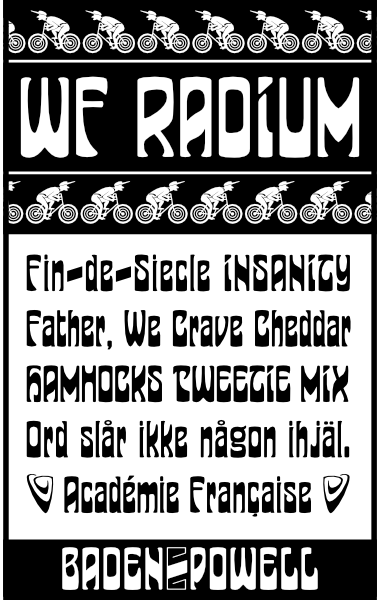 WF Radium
WF Radium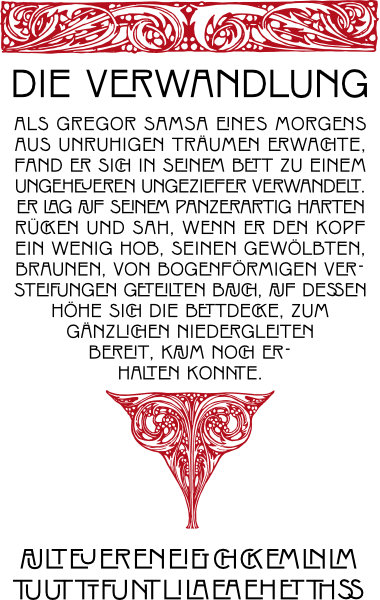 WF Rienzi Versalien
WF Rienzi Versalien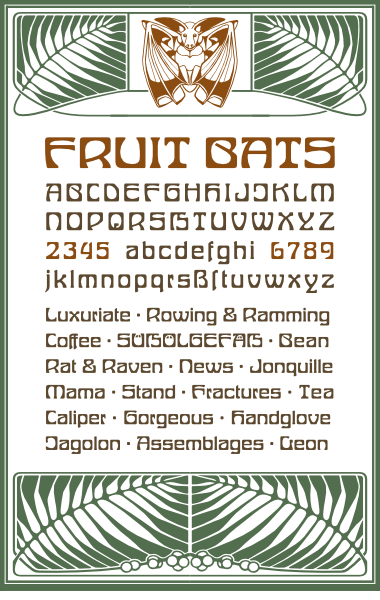 WF Wallenstein
WF Wallenstein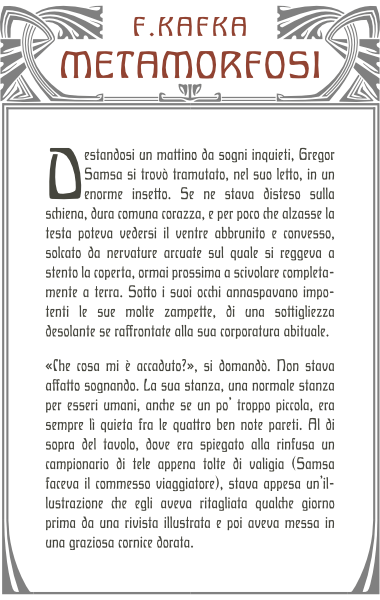 WF Wittelsbach
WF Wittelsbach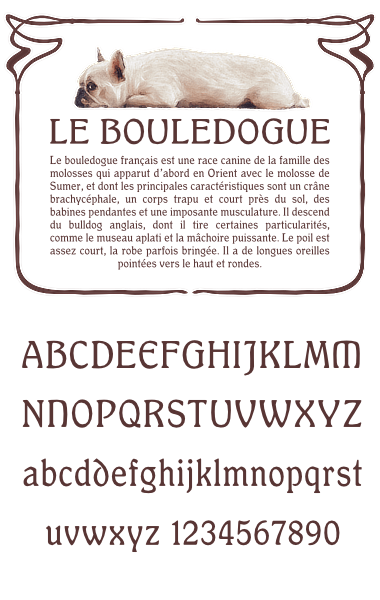 WF Schelter Antiqua
WF Schelter Antiqua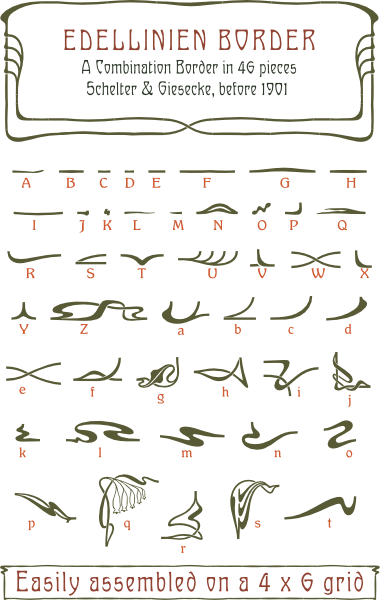 WF Border Edellinien
WF Border Edellinien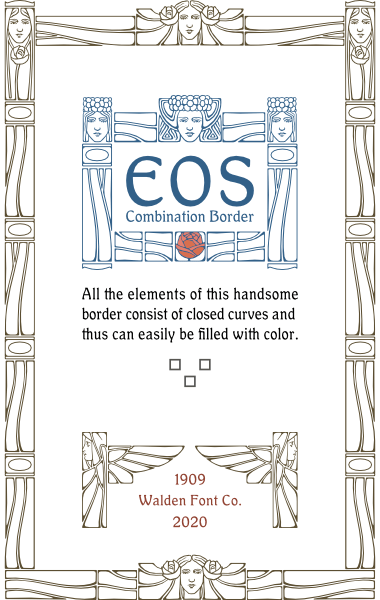 WF Border Eos
WF Border Eos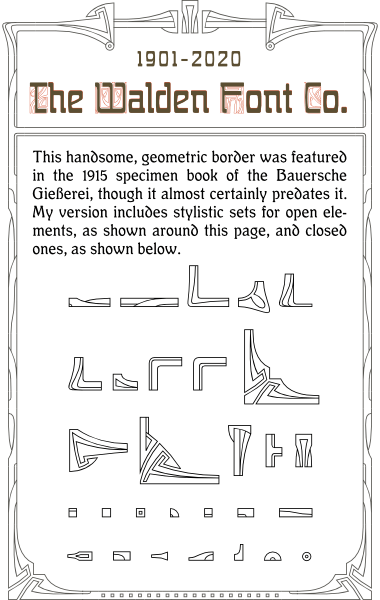 WF Border Flach
WF Border Flach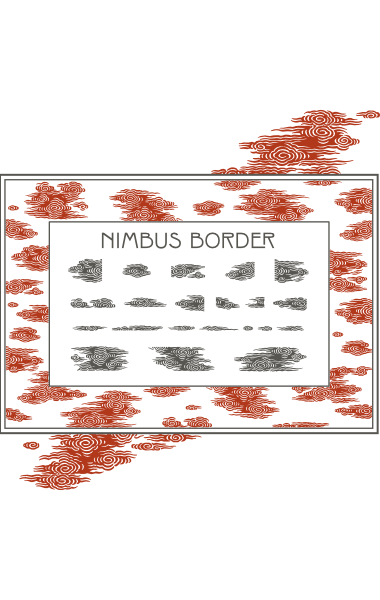 WF Border Nimbus
WF Border Nimbus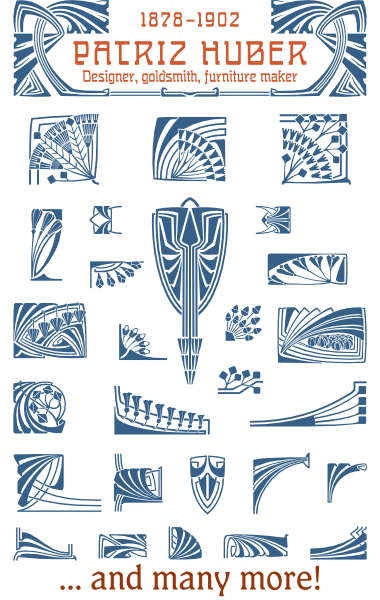 WF Border Patriz Huber
WF Border Patriz Huber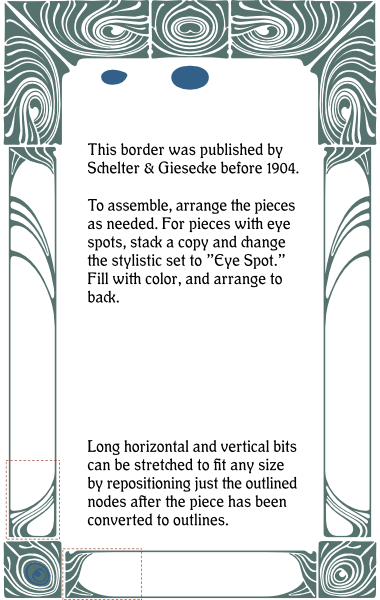 WF Border Peacock
WF Border Peacock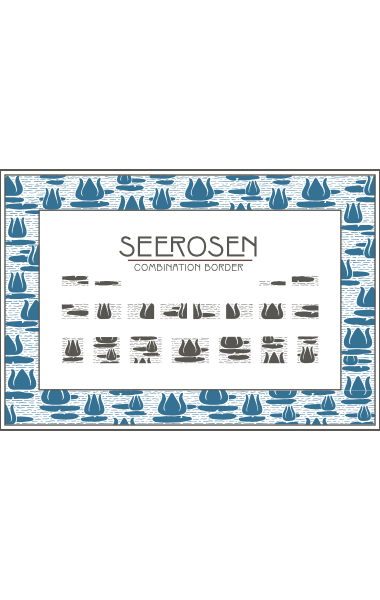 WF Border Seerosen
WF Border Seerosen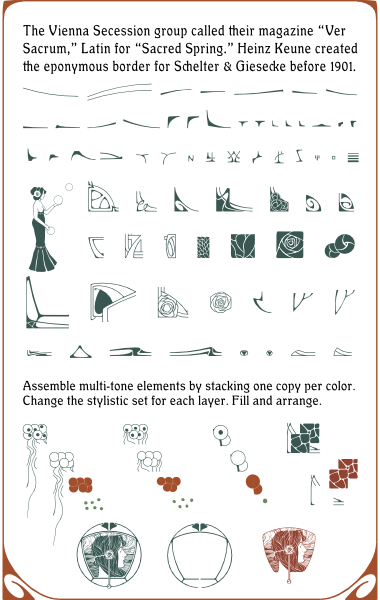 WF Border Ver Sacrum
WF Border Ver Sacrum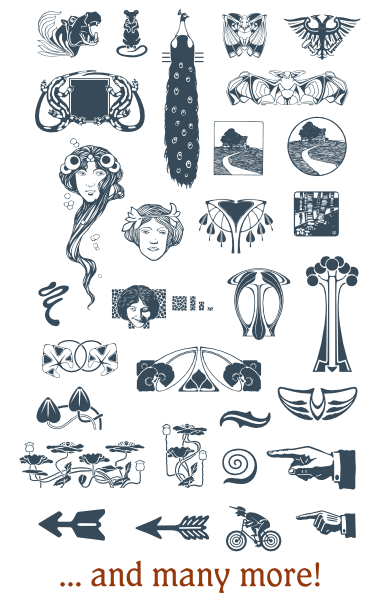 WF Jugendstil Ornaments
WF Jugendstil Ornaments
About Jugendstil
Following the example of British, French, and Belgian artists that had rebelled against the stuffy historism of their national academies of art, a small circle of German artists formed the “Munich Secession”
group in 1892. They set out to create everyday art in a modern, forward-looking style, drawing inspiration from non-European art forms, and from nature itself. From 1896, they published their works and ideas in an artist’s weekly titled “Jugend” (Youth), which soon evolved
into a widely known and appreciated magazine for “modern living.” Its name soon became synonymous with the German version of Art Nouveau. Early “Jugendstil” (Youth Style) combined the floral motifs of Belgian and French Art Nouveau with the craftsmanship of the British Arts
and Crafts movement. Within a few years, it evolved into a much more restrained, linear style, favoring clean lines and understated, geometrical décor in a way that directly foreshadowed Art Deco. Many of the artists responsible for this development continued on,
with perhaps the Bauhaus as a logical conclusion. With this background in mind, I have selected the typefaces in this design kit to provide a representative, though necessarily incomplete, cross-section of Jugendstil type design. I hope it will form a useful addition to your toolkit.
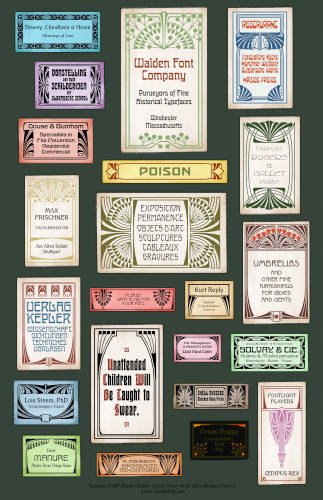 Patriz Huber Ornaments in Use
Patriz Huber Ornaments in Use





















